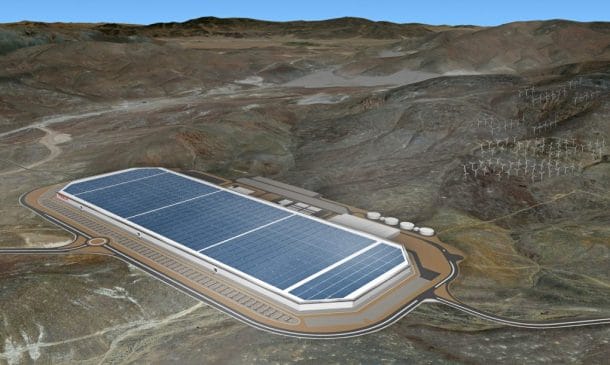Elon Musk’s long sought dream of making the future truly sustainable just got one step closer, as Tesla just started their first lithium-ion battery mass production Gigafactory near Sparks, Nevada. This production is the first part of their ambitious plan of producing 150 GWh of lithium-ion battery cells annually. These batteries will be enough for up to 1.5 million electric vehicles as Tesla intends to manufacture over 500,000 cars per year before 2020. With reports of the company receiving more than 400,000 pre-orders for the Model 3, this doesn’t seem like a distant reality.
The Gigafactory will be making batteries entailing “2170 battery cell”, which are 21 millimeters in diameter and 70 millimeters in length. Tesla came up with the design after a partnership with Panasonic, and these cells will appear in Tesla’s Powerwall 2 and Powerpack 2 energy products. The batteries for the much-anticipated Model 3, which will be company’s first affordable EV, will also be produced in the second quarter.

Tesla claim on their website that by 2018, the Gigafactory will be able to produce 35 GWh per year of lithium-ion battery cells, which is
“nearly as much as the rest of the entire world’s battery production combined.”
It further boasts about the magnanimity of the design,
“Already, the current structure has a footprint of 1.9 million square feet, which houses 4.9 million square feet of operational space across several floors. And we are still less than 30 percent done. Once complete, we expect the Gigafactory to be the biggest building in the world. “
The company is also planning to build a second Gigafactory in Europe, with the location yet to be revealed. The company was also quick to point out that this mega factory will help in creating jobs for several thousand employees this year. It also claimed that at peak production, they would hire 6,500 people and the sheer influence of such a large scale production will create another 20,000 to 30,000 jobs in the surrounding areas.


